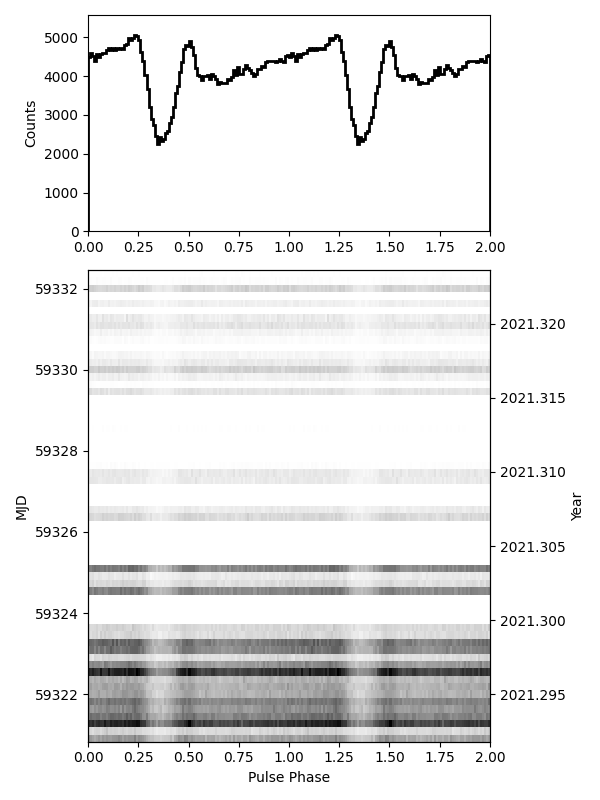NICER / ISS Science Nugget
for April 29, 2021
NICER Discovers Pulsations from MAXI J0903-531
JAXA's MAXI payload spends its days surveying the sky in X-rays from its perch on top of the ISS. On April 14, it triggered on a new X-ray source in the constellation Vela, dubbed MAXI J0903-531. In an example of international collaboration fostered by the ISS, the sky coordinates were communicated to the NICER team, who commanded the sensitive NICER X-ray Timing Instrument to point at the new source. In quick-look data, the NICER team found that the source is pulsing with a period of 14.055 seconds, indicating that it is a rotating neutron star with a strong magnetic field. This was reported in an Astronomer's Telegram by Ray et al. Soon thereafter, ground-based observations confirmed that there is a hot, massive companion star at that location, validating the hypothesis that this is a new high-mass X-ray binary system. The science team is now looking back through data from the Gamma-ray Burst Monitor (GBM) instrument on NASA's Fermi gamma-ray space telescope to try to characterize the orbit of the neutron star about the massive star. NICER's frequent monitoring of the neutron star pulsations is critical, as is its sensitivity, because the outburst is beginning to fade and detecting the pulsation is becoming increasingly difficult. Some of the ground-based observations see visible-light variations with a period of 0.79 days (about 19 hours), but the precise timing observations with NICER don't show the large Doppler variations that would be expected if this variation represented the orbital period of the system. Instead, the Doppler shifts observed with NICER, combined with the historical outbursts revealed by GBM, suggest a longer orbital period, probably around 50-60 days; the 0.79 day visible-light periodicity may represent the spin of the massive companion star. The teams are hoping to pin down the orbital parameters with further observations.

Figure: Top panel: NICER's time-averaged measurement of the pulse profile of MAXI J0901-531 Ñ the variation of X-ray brightness with the neutron star's rotation (plotted twice for clarity) Ñ exhibiting an unusual shape with a deep dip. Bottom panel: the grayscale shows all the NICER observations thus far, with dimming clearly visible as the outburst progresses.
<< Previous
Main Index
Next >>